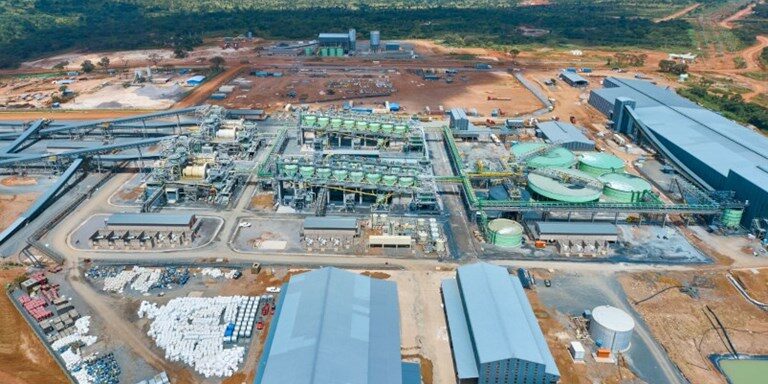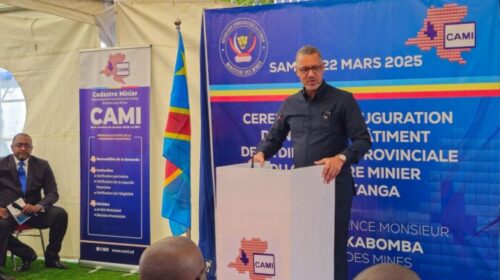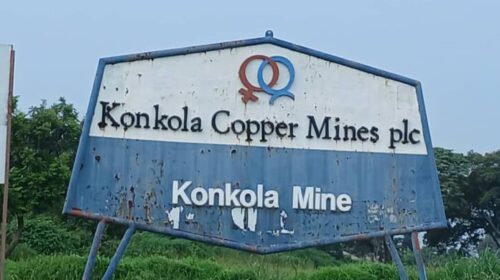Ivanhoe Mines Reports Q3 2024 Production Results
Kamoa-Kakula milled a record 3.3 million tonnes, producing a record 116,313 tonnes of copper in concentrate during Q3, with the Phase 3 concentrator in ramp-up
Phase 3 concentrator ramp-up approaching steady-state throughput and recovery as at quarter end
Kamoa-Kakula’s 2024 production guidance range adjusted to 425,000 – 450,000 tonnes of copper
Kipushi produced 17,817 tonnes of zinc in concentrate during ramp-up in Q3 2024
Kipushi’s 2024 production guidance range lowered to 50,000 – 70,000 tonnes of zinc
Kipushi concentrator now achieving recoveries in excess of 90%, as ramp-up continues to commercial production
Ivanhoe Mines to issue Q3 2024 financial results and host conference call for investors on October 30
Kolwezi, Democratic Republic of Congo–(Newsfile Corp. – October 7, 2024) – Ivanhoe Mines (TSX: IVN) (OTCQX: IVPAF) Executive Co-Chair Robert Friedland and President Marna Cloete announced yesterday that during the third quarter of 2024, the Kamoa-Kakula Copper Complex in the Democratic Republic of the Congo (DRC) produced a record 116,313 tonnes of copper in concentrate and the ultra-high-grade Kipushi zinc mine, also in the DRC, produced 17,817 tonnes of zinc in concentrate.
Year-to-date, Kamoa-Kakula has produced 303,328 tonnes of copper in concentrate. In addition, Kamoa-Kakula produced 40,025 tonnes of copper during September, achieving a record daily production rate of 1,334 tonnes of copper per day over the 30-day month. The average daily production rate increased further during the final week of September to 1,460 tonnes of copper per day.
Kamoa-Kakula’s Phase 1 and 2 concentrators milled approximately 2.2 million tonnes of ore during the third quarter at an average feed grade of 4.9% copper. Quarterly copper production from the Phase 1 and 2 concentrators was 94,214 tonnes, at an average recovery rate of 86.6%.
Kamoa-Kakula’s Phase 3 concentrator, which produced first concentrate on June 10, 2024, milled approximately 1.1 million tonnes of ore during the third quarter at an average feed grade of 2.6% copper.
The feed to the concentrator during the quarter was predominantly from historical surface stockpiles. The Phase 3 concentrator, which achieved commercial production during the quarter, produced 22,099 tonnes of copper in concentrate at a recovery rate of 79.9%, reflecting the ongoing ramp-up.
Following the commissioning of the Phase 3 concentrator’s fine-grinding mills in early September, sustained improvements in processing throughput and recovery rates were achieved. During the last week of September, the concentrator milled 117,484 tonnes, which is equivalent to an annualized processing rate of over 5.5 million tonnes per annum, after accounting for availability.
In addition, over the same period, the copper recovery rate of the concentrator increased to an average of 84%. Kamoa’s operations team expects to reach the nameplate recovery rate of 86% during the fourth quarter, thereby achieving steady-state production.
In addition, the team are also targeting to increase the feed grade to the Phase 3 concentrator up to approximately 3% by Q1 2025, while ore reserves continue to be developed towards the higher-grade zones in the Kamoa 1 and Kamoa 2 underground mines.
At quarter end, total on-site backup power generation capacity is 135 MW, following the installation and commissioning of an additional 72 MW of generators during the quarter.
The on-site backup power capacity is sufficient to power Kamoa-Kakula’s Phase 1 and 2 concentrators at full capacity in the event of intermittent power.
Kamoa’s project team remains on schedule to have 201 MW of installed on-site backup power generation capacity by year-end. In addition, imported power from the Southern African Power Pool, via the Zambian interconnector, stands at 65 MW at quarter end. Negotiations are underway to increase imported power to over 100 MW by the end of the year.
| Kamoa-Kakula 2024 Production Guidance | ||
| Previous guidance | 440,000 – 490,000 | Contained copper in concentrate (tonnes) |
| Revised guidance | 425,000 – 450,000 | Contained copper in concentrate (tonnes) |
All figures are on a 100%-project basis and metal reported in concentrate is before refining losses or payability deductions associated with smelter terms.
Revised guidance reflects production lost due to intermittent grid power, in particular prior to the installation of additional on-site generator capacity and agreements in place to import power to support power consumption from the DRC grid.
Guidance also considers the commissioning of the Phase 3 concentrator, which now is nearing steady-state as at the end of the quarter.
Kamoa-Kakula’s revised 2024 production guidance is based on several assumptions and estimates as of September 30, 2024. Guidance involves estimates of known and unknown risks, uncertainties and other factors that may cause the actual results to differ materially.
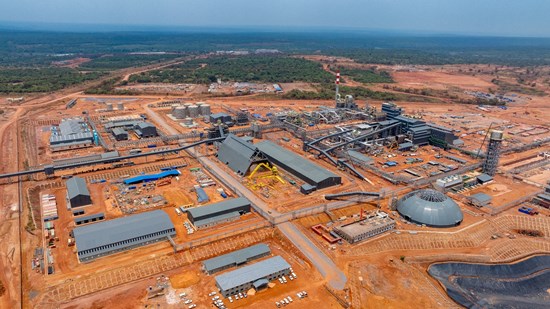
Construction of Kamoa-Kakula’s 500,000 tonnes per annum smelter is on schedule for construction completion by end of year.
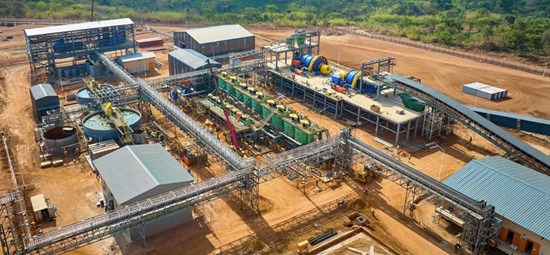
The smelter construction site includes a milling and flotation plant designed to reprocess slag generated by the smelter, taking overall recoveries to approximately 98%.
New Kipushi concentrator ramping up to commercial production
Following first concentrate production on June 14, 2024, ramp-up of Kipushi’s concentrator continued during the third quarter. Kipushi’s concentrator milled approximately 88,000 tonnes of stockpile ore during the third quarter at an average feed grade of 27.1% zinc.
Quarterly zinc production from the concentrator was 17,817 tonnes, at an average flotation recovery rate of 72.0%. Exports of zinc concentrate also commenced towards the end of the quarter.
Ramp up of Kipushi’s concentrator to its annual steady-state production rate of over 250,000 tonnes of zinc in concentrate has been slower than anticipated, principally due to three factors: first, ore mined and stockpiled from the top of the Big Zinc orebody has a higher iron content, which was negatively impacting concentrator recoveries prior to reagent adjustments being made; second, ore feed into the dense media separation (DMS) circuit contains a higher than expected proportion of fine material (” fines”), which is limiting throughput; and third, the increase in power requirement, from 5 MW used during construction to 18 MW for operations, has exposed transmission bottlenecks in the local grid infrastructure.
During the latter part of September, the Kipushi concentrator regularly operated at its nameplate throughput of 83 tonnes per hour (800,000 tonnes per annum on an annualized basis).
However, the above operational disruptions have inhibited the nameplate throughput from being sustained on a daily basis. While the concentrator’s metallurgical recoveries have now improved to over 90%, targeting a design rate of approximately 95%, a work program is underway to separate the ore fines upstream of the DMS, as well as upgrade the local grid infrastructure.
This work program will be carried out concurrently with the debottlenecking program. As a result, the full-year production guidance range for Kipushi has been reduced from 100,000 – 140,000 tonnes of zinc in concentrate, to 50,000 – 70,000 tonnes of zinc in concentrate.
Underground development continues to progress ahead of schedule. Year-to-date, over 3,000 metres of underground development has been completed year to date, approximately 100 metres ahead of schedule.
As of September 30, 2024, a total of 360,000 tonnes of ore at an average grade of 23% zinc is stored in surface run-of-mine (ROM) stockpiles near the Kipushi concentrator. This includes a high-grade section of 150,000 tonnes of ore at an average grade of 30% zinc.
Kipushi debottlenecking program underway
Engineering and procurement of long-lead order equipment items are well underway for the Kipushi debottlenecking program. The debottlenecking of the Kipushi concentrator is targeting a 20% increase in concentrator processing capacity to 960,000 tonnes of ore per annum.
The debottlenecking program is expected to be completed in mid-2025. There is sufficient capacity to increase mining and hoisting rates to sustainably support this increased concentrator throughput.
| Kipushi 2024 Production Guidance | ||
| Previous guidance | 100,000 – 140,000 | Contained zinc in concentrate (tonnes) |
| Revised guidance | 50,000 – 70,000 | Contained zinc in concentrate (tonnes) |
All figures are on a 100%-project basis and metal reported in concentrate is before refining losses or payability deductions associated with smelter terms.
Kipushi’s revised 2024 production guidance is based on several assumptions and estimates as of September 30, 2024. Guidance involves estimates of known and unknown risks, uncertainties and other factors that may cause the actual results to differ materially.
Underground development continues to progress ahead of schedule, with over 80,000 tonnes of contained zinc in surface ROM stockpiles.
![]()


